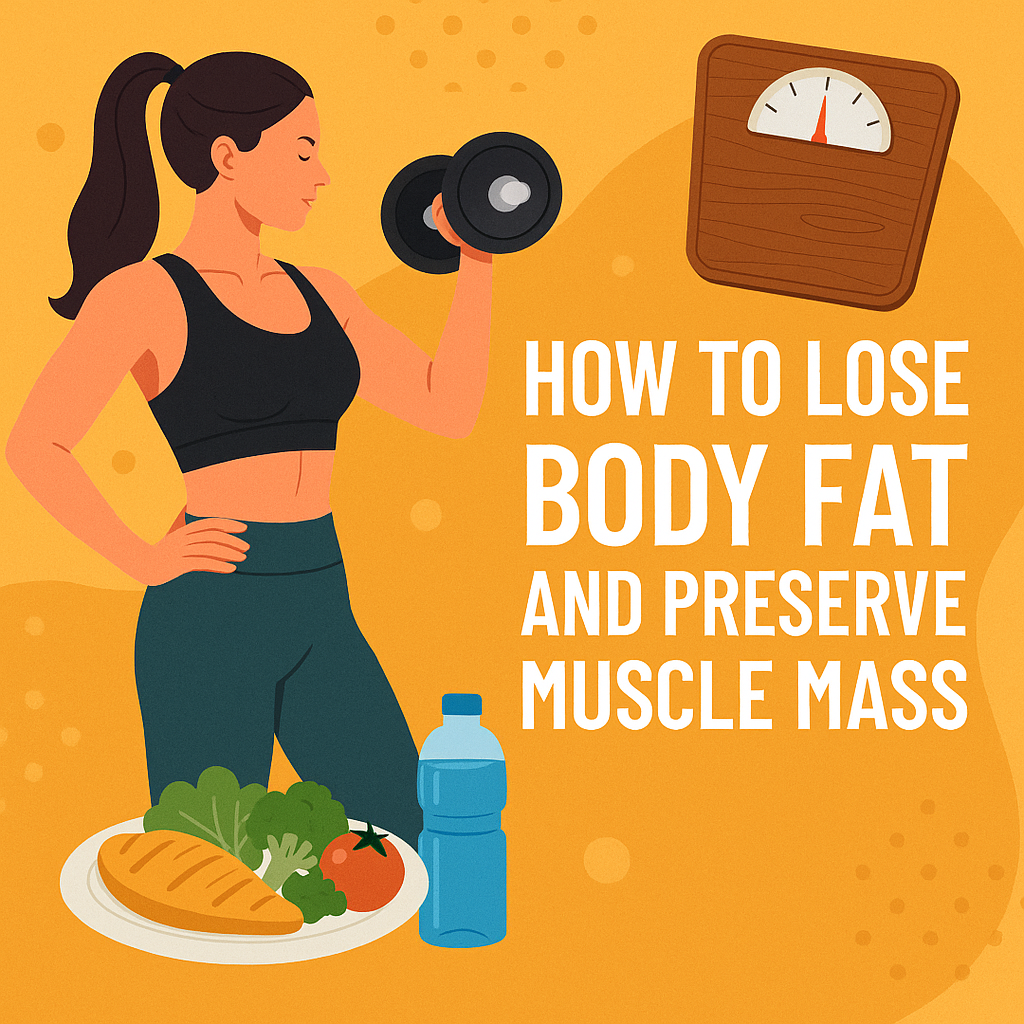
Dietician Sheela Seharawat
How to Lose Body Fat and Preserve Muscle Mass
Losing weight is one thing—losing fat and keeping muscle is another game altogether. If you’re on a fitness or health journey and wondering how to drop that stubborn body fat while staying toned and strong, you're in the right place.
Whether you're aiming for natural weight loss tips, want to lose weight without gym workouts, or are exploring home remedies for weight loss, this guide breaks it all down in a simple, science-backed, and practical way.
Let’s dive in.
Why Preserving Muscle Matters During Weight Loss
Most people focus only on the number on the scale. But the quality of your weight loss is even more important.
Here’s why you want to keep your muscle while losing fat:
-
Muscle boosts metabolism – more muscle = more calories burned at rest.
-
Prevents a "skinny fat" look – you’ll appear toned and fit, not just smaller.
-
Supports strength and energy – essential for daily life and long-term health.
-
Reduces risk of regaining fat – muscle maintenance improves body composition.
1. Set the Right Calorie Deficit (Not Too Much!)
To lose fat, you need a calorie deficit—burning more than you consume. But here’s the catch: too large a deficit can lead to muscle loss.
Ideal strategy:
Aim for a moderate calorie deficit of 300–500 calories per day.
This slow and steady approach allows:
-
Sustainable fat loss
-
Better muscle preservation
-
Less fatigue and cravings
Tip: Use a calorie calculator to estimate your maintenance calories and reduce slightly.
2. Prioritize Protein Intake
Protein is your best friend on this journey. It plays a vital role in:
-
Repairing muscle tissue
-
Preserving lean mass during fat loss
-
Keeping you full longer (which helps control cravings)
How much protein do you need?
General guideline:
1.6–2.2 grams per kg of body weight daily
Sources of lean protein:
-
Eggs and egg whites
-
Greek yogurt
-
Paneer or tofu
-
Chicken breast or fish
-
Lentils and legumes
Related read: Top High-Protein Foods for Weight Loss
3. Strength Training Is a Must
You can lose weight without the gym, but you must engage your muscles.
Strength training signals your body to retain muscle even while in a calorie deficit.
Simple home-friendly strength exercises:
-
Bodyweight squats
-
Push-ups (on knees if needed)
-
Lunges
-
Resistance band rows
-
Planks
Try 3–4 sessions a week for 30–40 minutes. Mix upper and lower body movements.
Don’t forget: Rest and recovery are as important as workouts.
4. Don’t Skip Cardio—Do It Right
Cardio helps with fat loss but too much of it, especially without fuel, can lead to muscle breakdown.
Best types of cardio for fat loss:
-
Brisk walking (30–45 min)
-
Cycling or swimming
-
HIIT (High-Intensity Interval Training) – 20 minutes, 2–3 times/week
Pro tip:
Pair cardio with strength training days, but don’t do both intensively every day.
5. Sleep Like It’s Your Job
Sleep is one of the most overlooked home remedies for weight loss.
Poor sleep disrupts hormones like ghrelin and leptin, increasing hunger and cravings. It also slows recovery and muscle repair.
Aim for:
-
7–9 hours of quality sleep
-
A consistent sleep schedule
-
No screens an hour before bed
-
A cool, dark room
Bonus: Good sleep improves insulin sensitivity and supports natural fat burning.
6. Natural Weight Loss Tips That Work
Weight loss doesn’t have to be complicated. Here are natural weight loss tips to accelerate fat loss:
-
Drink warm water with lemon every morning
-
Start meals with a bowl of salad or soup to control portions
-
Eat slowly and chew thoroughly
-
Cut out sugary drinks – they’re silent fat gainers
-
Add apple cider vinegar (1 tsp in water before meals) for appetite control
-
Manage stress with yoga, journaling, or deep breathing
Explore more: Ayurvedic Weight Loss Remedies You Can Try at Home
7. Stay Hydrated
Water is essential—not just for survival, but for efficient fat metabolism.
Benefits of hydration:
-
Improves digestion
-
Supports muscle function
-
Reduces false hunger signals
-
Flushes out toxins
How much water should you drink?
At least 2.5–3 liters daily (more if you’re active or in hot weather).
8. Avoid These Common Mistakes
Even if your diet and workouts are in place, certain habits can sabotage your progress.
Top mistakes to avoid:
-
Relying solely on cardio
-
Not eating enough protein
-
Skipping meals (especially breakfast)
-
Crash dieting or starving
-
Overestimating calories burned during workouts
-
Not tracking progress correctly (use photos, measurements, not just the scale)
9. Use Body Composition Tools
Instead of obsessing over your weight, focus on body fat percentage and muscle mass.
Tools that help:
-
Smart scales (with body composition analysis)
-
Measuring tape (waist, hips, arms)
-
Progress photos every 2 weeks
Tip: You can still lose inches even when the scale doesn’t move.
10. Consistency Beats Perfection
Last but not least—remember, fat loss and muscle preservation take time.
You don’t have to be perfect, just consistent.
-
Make smart food swaps
-
Stay active daily (even light activity counts!)
-
Track your protein and water
-
Sleep well
-
Lift something (even your own bodyweight!)
FAQs: How to Lose Fat and Keep Muscle
1. Can I lose fat and build muscle at the same time?
Yes, especially if you're a beginner or returning after a break. Focus on strength training, high protein, and a slight calorie deficit.
2. Do I need supplements to preserve muscle?
Not necessarily. A balanced diet with enough protein and whole foods is enough. However, whey protein and creatine can support muscle maintenance.
3. How long does it take to see results?
You may notice changes in 4–6 weeks with consistent effort. Visible transformation usually happens around the 8–12 week mark.
4. Can I lose fat without going to the gym?
Absolutely. With bodyweight workouts, clean eating, and daily movement, you can lose weight without gym training and still preserve muscle.
5. Is fasting good for fat loss and muscle gain?
Intermittent fasting works for some people, but ensure you're getting enough protein and calories within your eating window to protect muscle mass.
Final Thoughts
Losing body fat while preserving muscle mass is 100% possible—even from the comfort of your home. With the right nutrition, training, and habits, you’ll not only lose fat but also gain strength, confidence, and long-term health.
Start small. Stay consistent. And remember, slow progress is still progress.










